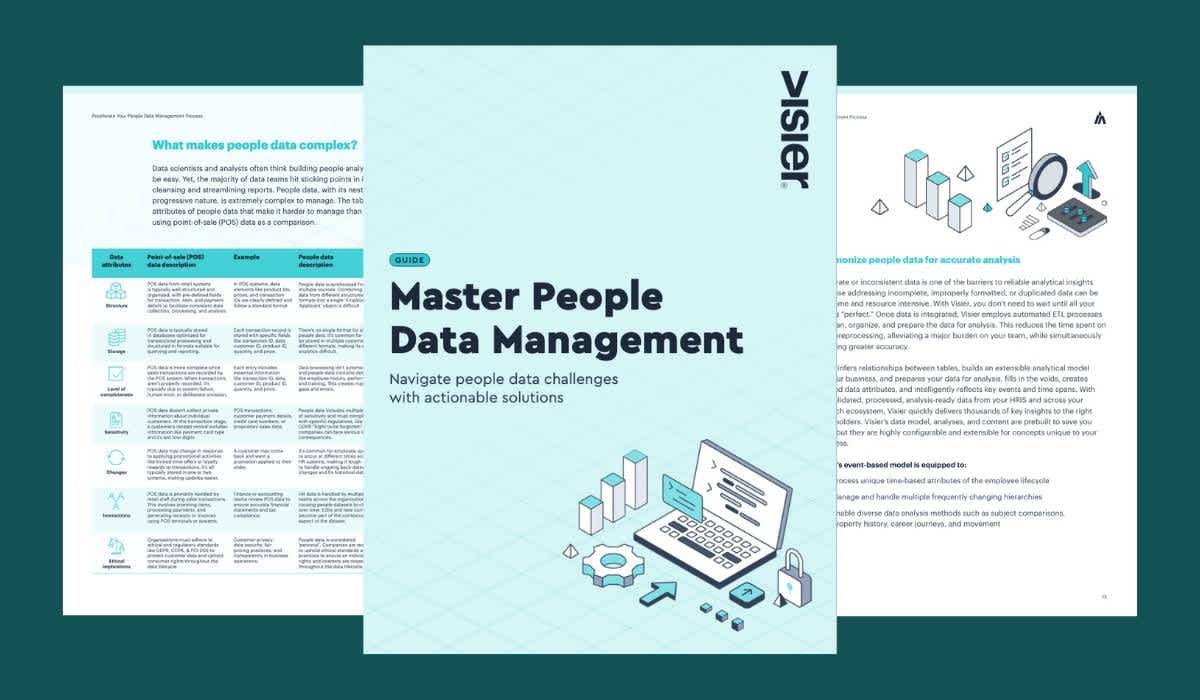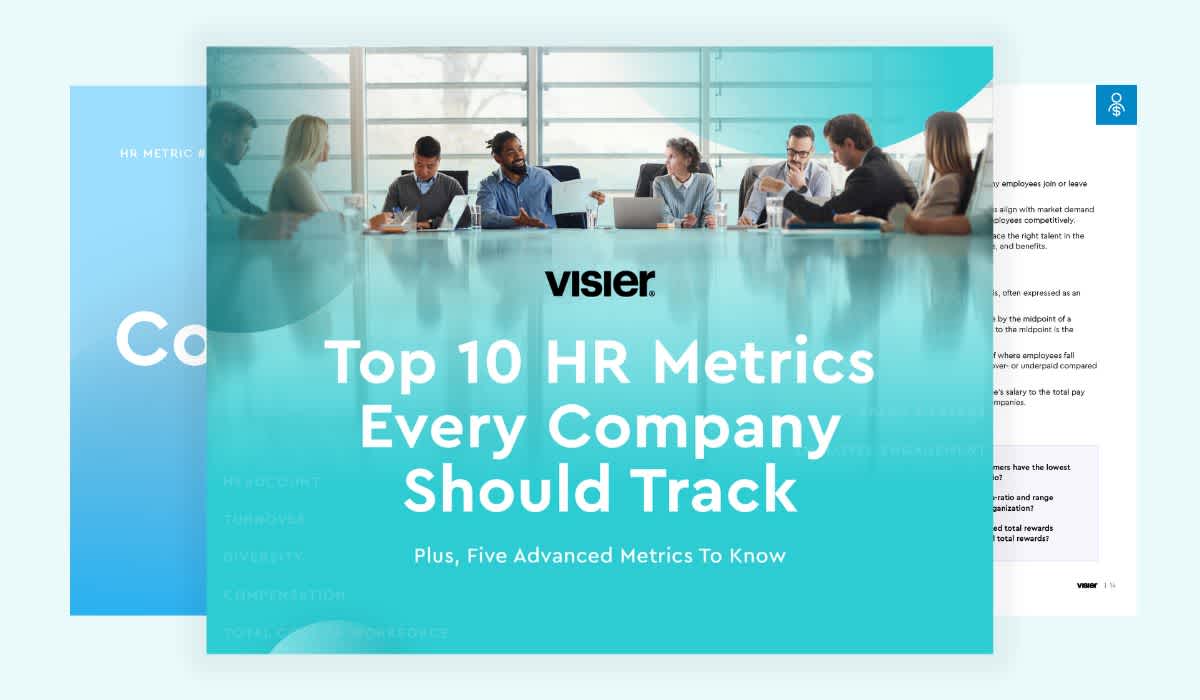The Data Terms Glossary
Visier's Data Glossary defines data terms, questions, and phrases commonly used in the people analytics and HR technology industry.

A growing compendium of data terms, questions, and—most importantly—their definitions. Visit the HR Glossary to discover commonly used terms in the human resources industry.
Augmented Analytics
Augmented analytics is a type of data analytics that leverages artificial intelligence (AI) capabilities like machine learning (ML) and natural language processing (NLP) to analyze increasingly sophisticated and large quantities of data.
Data Cleaning
Data cleaning, also called data cleansing or data scrubbing, is the process of preparing data to be stored and analyzed to ensure maximum reliability, validity, and overall quality.
Data Management
Data management is the process of gathering and using data in efficient, effective, and reliable ways. In HR or people analytics, data management ensures that people decisions are made based on accurate, reliable, and high-quality data.
Data Mapping
Data mapping is the process of connecting data fields in one source with data fields in another source. Data mapping is a critical step to reduce errors and standardize data.
Data Modeling
Data modeling is the use of diagrams to show how data will flow in and out of a database. Data modeling provides documentation of what was done and why it was implemented in a certain way. This helps eliminate redundancy and ensures the efficient retrieval and use of data.
Data Preprocessing
Data preprocessing refers to any type of processing that is done to raw data to get it ready for another data procedure. Simply put, data preprocessing is the processing of turning raw source data into a clean data set.
Data Storytelling
Data storytelling is the process of using data to convey information in an interesting, compelling, and readily understandable manner.
Data Transformation
Data transformation is the process of converting data from one form to another to make it more useful and easier to analyze as part of a decision support process. It's required by organizations that want to make data more useful and meaningful to end users.
Data Validation
Data validation is the process of checking the accuracy and completeness of data to confirm the correctness of the data being transmitted. It involves verifying and cleaning data to meet specific predefined standards or criteria.
Extract, Transform, Load (ETL)
ETL is important for ensuring accuracy in the analysis of data so you can get insights that allow you to drive reliable and accurate decisions.
HR Databases
An HR database is a centralized repository of data related to an organization’s employees which may include a wide range of information such as demographics, job titles, contact information, skills, salary, benefits, absenteeism, performance review data, training data, and more.
HRIS (Human Resources Information System)
HRIS systems help organizations save resources by centralizing HR data and automating routine processes. An effective HRIS provides organizations with reliable data needed to make better people decisions.
Machine Learning (ML)
Machine learning is a type of artificial intelligence that allows computer technology to perform like humans—learning from people’s experiences to improve their accuracy over time.
Natural Language Processing (NLP)
Natural Language Processing is a type of machine learning (ML) focusing on human language. The goal of NLP is to make written or spoken human language understandable to machines.
Self-Serve Analytics
Self-serve analytics is the ability to access and analyze data independently of trained data analytics experts. The future of self-serve analytics will democratize data and insights, making meaningful data available to more people within their respective organizations and helping drive more informed decision-making.
Visual Analytics
Visual analytics is the use of specialty tools and processes to analyze and present data visually. This process uses data visualization to show information in visually appealing ways to make it easier and quicker for users to understand what the data is telling them. Visual depictions of data can include anything from simple charts and graphs, to maps and more creative visualizations like infographics.


